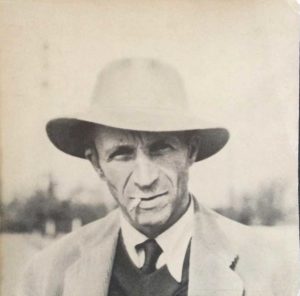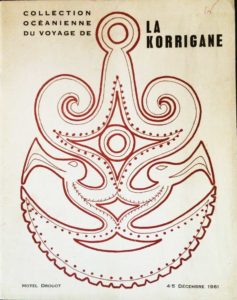Iatmul Culture
Waber
Drum
Middle Sepik River, Papua New Guinea
Height 29 1/8 inches (74cm)
Iatmul Culture - Drum
Collected in situ by M. et Mne. van den Broek in October 1935, during the La Korrigane expedition, organized with the du Musee D’ethnographic De Trocadero. collection number 1544
Deposited into the Musee de l’Homme, Paris, March 1939 ( ID # “D 39.3 2005)
Drouot Hotel, Paris, December 4 and 5, 1961 Lot 75
Pierre Loeb
Albert Loeb
Anthony Meyer
Wayne Heathcote
Bill Ziff Collection
Published
Collection Oceanienne Du Voyage De La Korrigane, Drouot Hotel 4-5 December 1961, lot 75
L’Aventure De Pierre Loeb, La Galerie Pierre, Paris 1924-1963, Pg. 107 Item # 222 with image
Exhibited
Musee de Homme 1939 —1961
Musee D’Art Moderne De La Ville De Paris, June 7- September 16, 1979
Musee D’Ixelles, Brussels, October 4- December 1979
This masterpiece includes the following correspondence from Christian Coiffier. Translated by Anthony Meyer from French to English.
“It was collected in October 1935 by M. et Mme van den Broek who acquired it in trade for two medium length knives from the son of Labmar, named Temémali, from the village of Kaningara (Karmaria river, feeder of the South West river or Krosemere).
This small drum was locally known as Waber, and was carved from the very hard wood bekor. It was carved long ago by the Tchambuli (Chambri) People with a stone tool and decorated with the use of a pig tusk. This type of drum was used during sing sings (festivities) and was stored in the house of its owner.
It was traded long ago to Labmar for a local traditional anti-mosquito bag of woven rattan by the original owner from the Chambri Lake.”


INQUIRY – Price On Request



 Prev
Prev


 Prev
Prev


 Prev
Prev


 Prev
Prev


 Prev
Prev

















